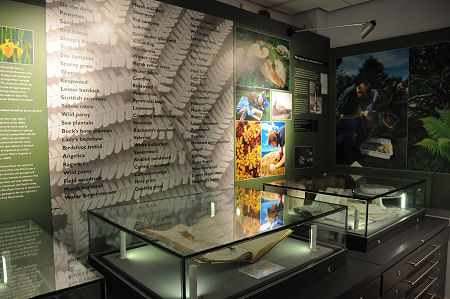 Part of the Robert Dick Collection a Caithness Horizons |
Robert Dick lived from January 1811 to 24 December 1866. He was a baker and self-taught botanist, geologist and naturalist who did much to place the natural history of Caithness on the map. The wider picture in Scotland at the time is set out in our Historical Timeline.
Robert Dick was born in Tullibody, Clackmannanshire, the son of an Excise Officer. He was educated in the parish school and left at the age of 13 to become an apprentice baker. When not working he developed an interest in local wildflowers and started collecting plants. After completing his apprenticeship, Dick went on to work as a baker in Leith, Glasgow and Greenock.
In 1826 Robert Dick's father was posted to Thurso and subsequently advised his son that there was an opportunity for an enterprising baker to establish himself in the town. Robert Dick set up in business as a baker in Thurso in 1830, and continued to work there until his death in 1866.
Dick's interest in the natural world had continued and he spent his spare time studying and collecting the plants, molluscs and insects of Caithness. He also became interested in the rocks and fossils of the area and in 1835 discovered fossils of fishes. He was frequently in touch with Hugh Miller and many of his discoveries only came into public view indirectly, as Dick himself shunned publicity and never published his findings.
By the 1860s Dick's business was facing stiff competition from other bakers in the town. In March 1863 he faced ruin after a consignment of flour was lost when the SS Prince Consort sank entering Aberdeen harbour, leaving him owing a considerable amount of money. He only staved off bankruptcy by selling his collection of fossils. It is thought that many of the fossils in this collection ended up in the National Museum of Scotland or the British Museum.
Dick's remarkable herbarium found a more local home. It amounted to around 3000 specimens of mosses, ferns and flowering plants, and was described as being "almost unique in its completeness". It is now housed, along with some of his fossils, in Caithness Horizons, a superb museum in Thurso.
